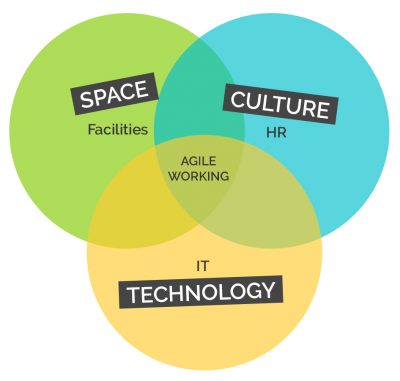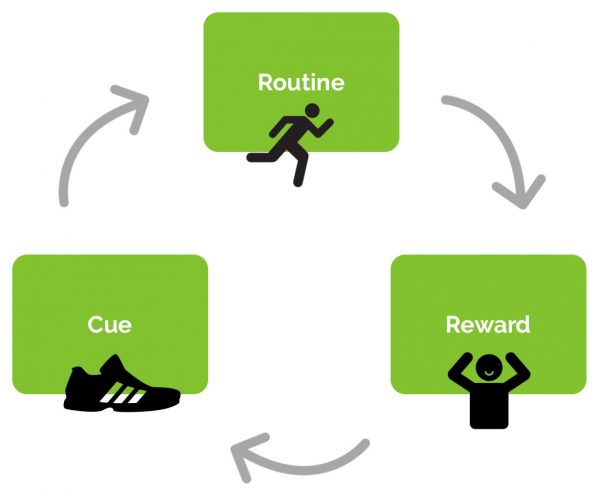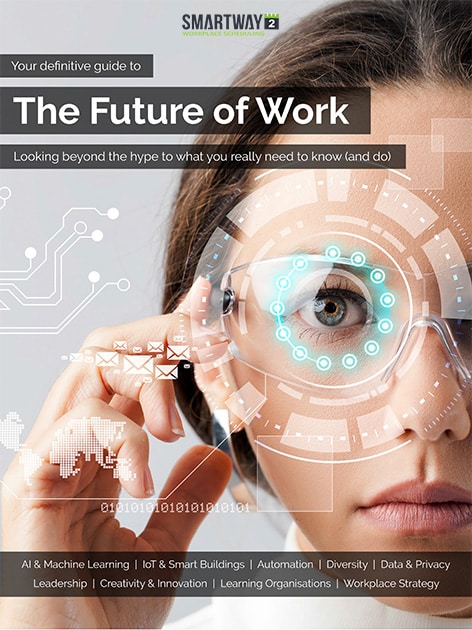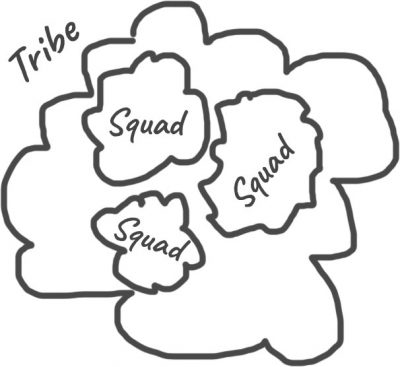
What is Transformational Facilities Management?
The changing role of Facilities
Facilities Management is shaping up to be one of the most challenging, diverse business roles there is.
To enable organizations to compete, Facilities and Real Estate teams are reaching far beyond maintaining the physical infrastructure; towards enabling innovation, collaboration and productivity.
Talent attraction and development rank as top priorities on nearly every CEO’s agenda; and it’s up to facilities to deliver – by creating a differentiated workspace. A ‘living’ workspace that actively influences the behaviour of those who use it.
Not only that, but the notion of a workplace is being challenged by the rise in agile working. Top talent often expects to work anytime, anywhere; so FMs are expanding their traditional boundaries to help a transient workforce get things done.
FM is becoming less confined to assets and facilities; and more about facilitation. FMs have the power to facilitate change.
That’s why we believe 2019 marks the beginning of a new era. An era of Transformational Facilities Management.
The most innovative, effective Facilities leaders are becoming agents of change. Tasked with balancing diverse business and end-user needs, they are masters of prioritization and ‘customer-centric’ thinking.
A new era of customer focus
The rise of customer-centricity and focus on end users has permeated almost every discipline within every organization. Facilities is no exception.
Think back to the release of the iPhone. Apple set a new bar, transforming our perceptions of how mobile devices should be. They were so easy to use that a toddler could get things done (aptly referred to as the ‘swipe before you can wipe’ generation!).
Soon user experience design became a top priority for all app makers and software companies. They had to create an experience that was quick, easy and enjoyable. Anyone providing a tricky, time-consuming, energy-sapping experience became vulnerable to customer-centric competitors stealing their lunch.
Now the same is happening in the workplace. People want fast, easy access to one-another; and to the tools, data, desks, meeting rooms and other facilities they need to do their best work.
FMs are the new employee experience designers
The expectations of today’s workforce are higher than ever. Quick, easy and enjoyable are no longer enough. New standards are being set for flexibility and personalization. Our tools and environment must do no less than embody – and help to create – our brand and culture.
That’s why Transformational FM demands that Facilities professionals become employee experience designers.
Facilities’ role in experience design extends beyond the basics of health and safety, security and compliance. Beyond the bottom line.
Facilities’ role in experience design is pivotal in attracting and developing diverse talent. In spurring innovation, creativity and agility. In creating a culture that embodies the values and vision of their organization, across every touchpoint.
Facilities professionals influence the wellbeing and output of their end users, no less – whether employees, contractors, partners or visitors.
A role with such breadth, scope and impact seems daunting. How will we up-skill and prepare for this new era? How can we ensure we walk the walk of Transformational Facilities Management, in order to deliver extreme value?
The Facilities Management skills gap
In reality, the Facilities profession is facing a major talent crisis.
The average age of FM professionals in the US is 49 (Schwartz 2014), while only 1% of college graduates plan to choose Facilities as their career (Pesek 2014).
Amongst millennials, awareness that FM even exists is particularly low. One study showed that only 43% of millennials working in STEM fields – with skillsets relevant to the industry – have heard of ‘Facilities Management’. And how many had an understanding of the profession? Barely 9% (Schwartz 2019; FML-IFM c2017).
There’s also a clear gender bias. Among those who did have an awareness of what Facilities Managers do, only 36% were women.
The Facilities industry is in serious need of a rebrand. Without raising awareness of the role and repositioning it to reflect the true breadth and depth of a 21st-century Facilities professional – we risk losing the war for talent. It’s time for innovators to step forward and influence not only the next generation; but the perception of the part they play in creating the ideal organization of the future.
Transformational FMs: agents of change
Given that Transformational FMs are charged with facilitating organizational change, let’s first talk about change itself.
Studies consistently show that most transformation projects fail.
The diagram below shows the 5 key ingredients necessary for creating lasting change. If one of the ingredients is missing, low and behold, we’re facing project failure.

That’s why it’s essential that Transformational FMs focus on aligning all the ingredients to create a paradigm shift. A shift that spans management, technology adoption and end-user behaviour.
To achieve this, FM professionals have a vital ‘influencer’ role to play. They must educate both senior management and end-users. All while acting as a role model that embodies this understanding, as they manage facilities and services in the workplace.
How to become a Facilities Influencer
But what does this ‘education’ consist of? How do we create this level of influence?
First of all, it’s vital to help stakeholders understand the true value and scope of next-generation Facilities. We need to cover all the bases:
- Imperative: Pressure for change
- Alignment: a shared vision
- Capacity: time and resource
- Clarity: tangible next steps
Start by looking at each of these components of change through the lens of your goals.
For example, say a key goal is to improve collaboration. How do you create pressure for change?
Creating pressure for change
Often we start with a business case. You might think ‘collaboration’ is a tricky one to measure; and you’d be right. But when you boil it down, collaboration is about working together. So how do you measure whether people are working together?
First of all, you might want to look at meeting space or group/shared desk occupancy. Another useful metric is how much extra space you’ve managed to free up for collaboration, that was previously going to waste (e.g. due to no-shows). If you want to know more about how to do this, check out this short video on ‘Smart Room Recovery’.
How’s about running a survey to gauge how much time people are wasting hunting for the right meeting space? How does this scale when you add it up across the total number of employees? What are the cost implications when you take average salary into account?
Yet numbers only scratch the surface.
“Knowledge does not change behaviour. We have all encountered crazy shrinks and obese doctors and divorced marriage counsellors” – Chip & Dan Heath.
Throw your gloves on the table
Creating pressure for change demands that we tell a story. And rather than just ‘tell’, it’s even more powerful if we ‘show’. Consider how you could gather evidence of the problem (ideally visual and striking; or with a compelling real-life story).
For example in their book Switch, Chip and Dan Heath share a story about Jon Stenger, who discovered that his company bought 424 different types of gloves to use in their factories. Despite the fact this craziness was documented in detailed reports, he couldn’t get people to do anything about it. So Jon decided to gather one pair of each type of glove, put price tags on them; and dumped all 424 on the boardroom table. He brought home the ridiculousness of their procurement policy so vividly, that it became obvious they had to change.
When you hone in on the problem, you can bring it to life. When you can visualize data, rather than glaring at line items in a numerical report, you’re communicating at a whole new level. That’s why our product team at Smartway2 is focusing heavily on new ways to visualize meeting room, desk occupancy and other facilities usage data.
Are people wandering the corridors, wasting time searching for a space to collaborate? If that’s the case, chances are the employee experience is suffering; and collaboration is falling short.
Perhaps your people are segregated in departments that never cross paths?
If so, you’re not alone. A Dutch insurance company ran a survey that showed employees identified strongly with their own department, but less so with the organization as a whole. Unsurprisingly, that meant that cross-departmental communication and collaboration was virtually non-existent. Read this in-depth case study on ‘New Ways of Working’ / Activity Based Working at the Dutch insurance company.
It’s also worth finding examples in your organization where people are highly collaborative. That way you can leverage what’s working and look for ways to copy and expand on that success.
Creating a shared vision
A vision should encompass your ‘pressure for change’ argument, while painting a clear picture of a compelling destination. People need to know where you’re heading and why it’ll be worth all the effort.
Using examples and case studies from other organizations can be useful, but beware of copying and pasting. Likewise, rather than nail yourself to examples of ‘best practice’, try to think in terms of ‘best principles’. These days, we operate in such complex environments that if you copy what someone else has done, you’ll seldom get the same result. But if you understand the underlying principles, you can take inspiration from others, while developing your own unique flavour of execution.
What it takes to get people on board with a shared vision is exactly the same as what it takes to create a TED talk that gets millions of views. Emotion.
How emotional is your average Facilities or Real Estate professional, I hear you ask?
In truth, what matters is authenticity. Whether you’re an introvert or extrovert – regardless of your communication style – you still have the power to move people and galvanize action. In a world where leadership is less about management and more about inspiration, this is an essential success trait (particularly when AI kicks in and removes the need for managers who monitor – read more in this article on The Future of Work.)
“The first step to inspiring others is to make sure you’re inspired yourself” – Carmine Gallo
Storytellers of all kinds, from motivational speakers to Hollywood script-writers, have long understood the importance of logos, ethos and pathos.
- Logos: data, facts, stats, research, business cases and other sources of information.
- Ethos: the credibility of the source – in this case you, the Transformational Facilities Manager; as well as any subject matter experts or studies you reference.
- Pathos: the most important piece of the puzzle – establishing an emotional connection with your audience/stakeholders.
Release some mosquitos
Your storytelling should weave in novel stats and extreme, memorable moments.
For example in his book Talk like TED, Carmine Gallo references Bill Gates’ legendary TED talk on the causes of malaria. Gates decided to perform a demonstration – but not your average demonstration. Instead he opted to do something completely unexpected and surprising. He released mosquitoes into the audience! His stunt even made the nightly news.
People cannot ignore the unexpected.
Part of being a transformational leader or influencer in any discipline is elevating your communication. With the rise of virtual reality, augmented reality, digital modelling tools and reporting tools that visualize data – not to mention endless examples of inspiring spacial design – Transformational Facilities Managers have the opportunity to create memorable moments that make stakeholders think differently about the challenges and opportunities facing your organization.
The rule of 3
You’ll also find it easier to communicate your ideas if you avoid weaving in too many ideas at once. No more than three key points or stories is a decent rule of thumb.
And remember: the more passionate you are, the more persuasive you are. That’s why it’s worth tapping into your own personal story. Why do you care about the future of the organization? Why do you care about Facilities Management? How did you get into this? What made you realise that FM can be transformational?
Yet you can’t be a lone warrior. When creating a shared vision, we need to place the emphasis on shared.
Bringing others along on the journey
Now you’ve moved your key stakeholders by painting a compelling picture of enormous pressure for change (the now); and a vision of the future (how things could be)… it’s time to make sure everyone gets aboard the train.
Too often visionaries spin an inspiring tale; but it’s too vague, theoretical or jargon-filled for others to truly grasp and run with. Concepts that are tricky to define are often impossible to implement.
When you’ve created ‘the feeling’, you need to shrink the change down into something manageable that people can really get their heads around. Otherwise people get spooked or lose interest when the rubber hits the road.
Start by chunking up your vision into clear, bite-sized pieces that don’t seem so overwhelming.
Do a 15 minute tidy
Think about how you feel when you imagine spring cleaning your whole house in time for your mother-in-law’s arrival. The task is demotivating. You know she’ll run her finger along every surface. You know she’ll look in every cupboard.
Getting started is always the hardest part. You find yourself popping out for coffee, backing up your computer, polishing the shoes you haven’t worn for five years, or pretty much anything to avoid starting the Daunting Task of Doom.
However, when you shrink the task, you get things done. Tell yourself you’re just going to tidy for 15 minutes. By the time you’re up and at it, the time passes and you decide to carry on. A few hours later, you’re half way done.
Organizational change is no different. People need some quick wins. They need a starting point that isn’t daunting. They need a 15 minute tidy as a kick-start.
Growth vs fixed mindset
Part of that is also giving people the confidence that they have – or can acquire – the skills that are needed. There are reams of research on the benefits of having a growth, as opposed to a fixed, mindset.
A fixed mindset places emphasis on innate talents: being good at this, bad at that. Whereas a growth mindset emphasizes effort. It is underpinned by a belief that learning and intelligence and capability can grow, with time, experience and practice. A belief that our traits are not fixed, but flexible; and remain flexible, regardless of age.
The most effective future leaders in any discipline instil a growth mindset in their teams and peers, through the language they use and the actions they take, every day.
Become a learning organization
Josh Waitzkin explores this concept of fixed thinking in his book, The Art of Learning. The movie Searching for Bobby Fischer is based on his early life, when he was recognized as a chess prodigy, winning the US Junior Chess championship in 1993 and 1994.
Waitzkin says the best thing that ever happened to him was losing his first national chess championship. He’d fallen into the trap of believing he was special and smarter than everyone else, so didn’t have to work too hard. According to Waitzkin, the moment we believe that success is determined by an ingrained level of ability, we become brittle in the face of adversity.
After this realization, he applied the same perspective to martial arts, becoming Taiji push hands world champion in 2004.
Thinking you are naturally ‘bad’ at something is just as detrimental as believing you are gifted. It reduces effort; and therefore results.
Stanford professor Carol Dweck, in a study she undertook with Dr. Lisa Blackwell, tracked several hundred seventh graders for two years, to determine whether they were ‘growth’ or ‘fixed’ thinkers. Results showed that the students with a growth mindset — those who thought they could change their own intelligence —increased their grades overtime, while those with the fixed mindset did not. The gap in performance kept widening over time.
Given the rapid cultural and technology changes we’re faced with today, it’s no surprise we feel daunted in the face of change. It used to be relatively easy to know everything about our field. Suddenly, the Information Age has brought infinite newness, making it humanly impossible to know everything. Our knowledge, relative to what’s going on around us, will feel ever-smaller. That’s why it’s essential that everyone become a lifelong learner. We must commit to building learning organizations. Read more about this in our free ebook: Your Definitive Guide to the Future of Work.
The more you can influence people to adopt a growth mindset, the more traction you’ll get in implementing change.
Creating capacity for change
The other potential barrier is time and resource. How can we possibly get this done?
Again, quick wins are essential, as is an experimental approach. Aim to start small and scale based on success.
That way you don’t fall down the waterfall and drown in costly irrelevance.
In other words, consider how software development (and many other projects) used to follow a waterfall approach. They’d lock themselves in a room for years, then unleash what they’d created on the world.
This worked pretty well when the world wasn’t changing so fast. If they’d understood the problem they were solving, chances are by the time they released it, their solution would still be relevant.
This, however, is no longer the case. These days things change so quickly, that we must instead take an agile approach. Agile teams work in sprints, delivering what they can in a short timescale (e.g. two weeks), responding to customer feedback and adjusting course as they go.
Transformational Facilities professionals take an experimental, agile approach to change.
Yes, some projects are big and long, like moving to a different office and doing a refurb to enable agile working. But even then, an agile approach is massively beneficial. For instance you’ll need to build flexibility into the layout. Even with all the research in the world, when people start using the spaces you’ve designed around their activities (read more about activity based working), you can never fully predict what will happen until the customer interacts with the solution. Bearing in mind the need for iteration based on data and feedback will help you create an environment that is open to tweaking and tuning. Flexibility and responsiveness are everything.
Data-driven decision-making
That’s why it’s helpful to use tools that provide the analytics you’ll need to adjust your plans on the fly. At Smartway2 we focus on giving you the data you need to make decisions as you fine tune your strategy, e.g. room or desk occupancy data, which spaces have the most cancelations, how much space you’ve freed up by prompting people to confirm their bookings, and lots more.
Having reliable data at your fingertips enables you to take an agile approach. Combining this with qualitative feedback gives you everything you need for continuous improvement.
All that said, you still need to create some capacity for change. Governance needs to be in place. The important point here is cross-functional collaboration. Transformational FMs typically work closely with IT and HR specialists, to deliver an exceptional experience. Chances are you’ll involve many other business areas too.

That’s why it’s essential to practice what you preach. When cross-functional collaboration and agility are top of the corporate agenda, you must embody these practices in the way you work.
Think less about divisions and departments, more about agile project teams. Teams that aren’t led by people based on hierarchy, but based on subject matter expertize and experience. In that sense, you may be a leader on one project and a follower or collaborator on another.
Architect for execution
We can have the greatest purpose and goals in the world, but it’s worthless with the ability to execute. Breaking free from the classic silo’d, departmental approach can create a culture of continuous transformation, with speedy execution.
Ultimately, whether or not we can execute depends on whether our organization – our teams – have been designed to enable execution. We must also bear in mind that execution gets trickier all the time, as our environment becomes more complex and expectations continously rise.
This will not happen by accident. We must architect it.
The question is, how?
First, let’s think about team structure.
Agility (speed) demands that we minimize barriers to getting work done. So it stands to reason we need to operate in small, cross-functional, agile teams. Teams that own the delivery of a particular offering (whether an internal or external customer offering). Teams that set their own objectives and define their own success metrics. Just like a startup.
Agile team structure
Well, this is exactly what happens at Spotify, even though they have 4,000 employees and $4.6 billion revenue. Spotify has Tribes that work on major offerings; and each Tribe has a specific mission. Tribes are made out of smaller teams called Squads, who in turn own their particular piece of the offering.
Then they have Chapters and Guilds you can join to discuss ideas about your role, or new discoveries in your domain.
Finally they have agile coaches to facilitate team dynamics and share learnings between squads.
So when you’re considering how to execute against your plan – a plan that undoubtedly requires cross-functional collaboration (particularly between FM, HR and IT) – it’s worth taking a few lessons from Spotify. As a Transformational FM you can go a step further than this too, by encouraging your entire organization to rethink the way they structure work.
Making it tangible with clear next steps
The final essential component in creating change is climbing out of the blue-sky big picture and getting down into the weeds.
This means outlining specific behaviours that will make the change real. All the vision and inspiration in the world doesn’t make an impact if people don’t now what to do differently.
This doesn’t mean dictating ‘this is how you must behave’ from on high. We can be smarter than that.
First of all, make sure you’re using tools that enable you to change the way things get done. For example, you might want to implement a ‘3 day rule’ to improve collaboration, as part of your agile working efforts. This means that people can’t book the same desk for more than 3 days in a row. That way they avoid slipping back into the same old patterns of sitting with familiar colleagues from their department, in silos, instead of building new relationships and working with a more diverse selection of people.
One way to do this is simply to tell people ‘you must obey the 3 day rule’, hand them policies and police their behaviours to make sure they comply.
But obviously that isn’t really in the spirit of innovative culture-building that we’re shooting for.
Instead, make sure your desk-booking tool can be easily configured to support the rules you want to implement. In other words, your tool should lend itself to experience design.
This level of flexibility in experience design is something we’ve focused on heavily at Smartway2. It’s easy to configure these ‘rules’ without needing a troop of consultants or custom coding. With a few clicks, you can ‘nudge’ the correct behaviours. If someone tries to book a desk on day 4, it simply shows as unavailable. What’s more, you can customize all the notifications (whether email, or mobile), to suit your brand voice.
Creating new habits
As well as tweaking the environment with rules baked into tools, you should also leverage tools to create habits.
“The difference between who you are and who you want to be is what you do.” – Charles Duhigg
Charles Duhigg’s research identified how habits form in a 3-step loop: cue, routine, reward.

The cue is what triggers the habit, e.g. ‘I need to book a meeting room’.
The routine is the behaviour you automatically engage in, e.g. diving into Outlook and booking your favourite meeting space: the big AV room with the comfy chairs and nice view.
The reward is the gratification you get from completing the routine.
By substituting the routine, you can change the habit.
Again, tools can help support this, enabling people to form new habits. For instance, say collaboration is being damaged because people keep hogging the AV room, when they aren’t even using the AV equipment. As a result, collaboration suffers. Video-conferencing hours are severely limited, leading to project delays.
Using a tool like Smartway2 solves this problem, via its configurable rules engine that enables experience design. When you try to book the AV room, it asks you to confirm that you’re actually going to use the AV equipment. A simple nudge, with a dramatic impact. Soon people start looking elsewhere for meeting spaces with comfy chairs and nice views. Meanwhile, cross-geography project velocity shoots up and remote workers build stronger relationships, faster. Another ‘collaboration’ quick win.
The influence of end-users
61% of FMs are certain that there will be an increase in employee influence on workplace decisions and conditions (Service Futures).
This is no surprise, given that service design and experience design both rely heavily on collaborating with the people whom you’re designing for. Likewise, organizations who actively involve their people in change initiatives see markedly more success than those who dictate from on high.
That’s why it’s essential to approach change not just in terms of getting buy-in from senior managers, but bringing end-users in on the process. The earlier and more you involve employees, the more likely you are to succeed.
A University of Exeter study showed that popular approaches to office space management often overlook the psychological needs of employees. They demonstrated that most organizations are missing out on the benefits that accrue when employees are included in decisions about space management. The research showed that people who are included in the design of their workspace come to identify both with that space and with the organization itself. Conversely, when employees have pre-determined space configurations thrust upon them, they feel disempowered and are more likely to take a negative view of change; and of the organization overall.
So it’s clear that any organization whose Transformational FM efforts seek to bolster culture and embody their vision and values must involve people in co-creating solutions – otherwise you’re leaving the true value of the opportunity on the table.
End-user involvement creates buy-in to decisions and changes; and buy-in determines results. Without it, too often strategies end up existing only in powerpoints, posters and superficial window dressing. In reality, strategy must be lived. Things need to happen. Behaviours need to adapt. Measurable results need to be realized: change that everyone can see, hear, feel and participate in.
Stay tuned…
Hopefully this article gives you a starting point for making things happen, on your road to Transformational Facilities Management.
Your feedback is important to us, so please leave comments or questions below.
We’ll be covering a lot more ground on Transformational FM – and the future of FM – in upcoming articles. To get alerts, please subscribe to our blog.
You may also enjoy these free content downloads…
- Your definitive guide to the future of work
- Your definitive guide to agile working
- Top 10 workplace trends impacting HR & facilities
Download eBook: The Future of Work
Your definitive guide to the future of work. Looking beyond the hype to what you really need to know (and do). Topics include machine learning, smart buildings, automation and more!




